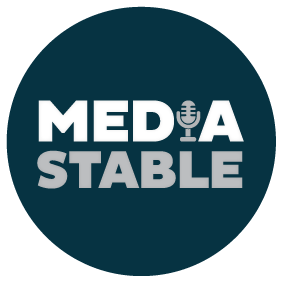Garth Davis – Australian Broker
Investment Property expert
RBA interest rate pause ‘almost certain’, says expert
New data has revealed Australia’s wage growth has begun to flatten and align with inflation, prompting calls for the Reserve Bank of Australia to halt any further increases to the cash rate.
The latest Employment Hero SME Index, which uses an accumulative dataset of over 150,000 small and medium-sized businesses (SMEs) and 1.5 million employees, revealed that the monthly median hourly rate marginally increased by 0.5% for October.
This was modest change compared to earlier months in the latest quarter, which saw a 2.8% rise. Average employee growth also saw a marginal increase of 0.1% month-on-month (MoM), with a quarterly change of 0.8%.
The real-time development in wage growth paired with an ongoing decrease in employee growth rates marked a potential turning point in the nation’s economic trajectory.
Ben Thompson (pictured above left), co-founder and CEO of Employment Hero, said that as wage growth became more in line with inflation, Australian workers “should be spared from further cash rate increases”.
The news comes as the most recent Finder survey revealed 82% of experts (31/38) believe the RBA will hold the cash rate at 4.35% in December, leaving 18% (7/38) predicting an increase.
Wage-led inflation no longer an issue
The new Employment Hero SME Index data follows concerns that the recent surge in wages could trigger a wage-price spiral, a phenomenon where rising wages fuel increased demand, leading to higher prices, and the cycle repeats.
The latest quarterly growth of the Wage Price Index (WPI) was the highest in its 26-year history, according to the ABS, rising +1.3% for the September quarter.
However, Thompson said these recent fears, which were previously indicated in Employee Hero’s June index, have now resulted in a “critical alignment” of wage growth and inflation.
“We’re almost certain that Aussies will be spared further cash rate rises for the remainder of this year,” said Thompson. “In fact, we would strongly encourage the RBA to hold tight on further interest rate increases.”
The bold call comes despite the RBA warning of another increase in the cash rate as recently as November 10 in its quarterly Statement on Monetary policy.
However, since then, inflation has continued to track down. The latest October monthly 4.9% increase is down from 5.6% in September and below the peak of 8.4% in December 2022.
“As we expect this plateauing wage trend to continue in 2024, Australian businesses and workers should receive a breather over the holiday season if the Reserve Bank pays attention to the data and pauses rate rises in at least the short term,” Thompson said.
The RBA’s “underhanded” November rate rise
The latest data comes amid the last RBA cash rate meeting of 2023 and after a relatively contentious decision in November to raise the cash rate to 4.35%.
A senior property expert has called the RBA’s Melbourne Cup Day rate rise an “underhanded move” – one that would continue to push property owners, renters, and businesses to “breaking point”.
Garth Davis (pictured above right), director of Property Powerhouse, criticised the federal government for not doing enough to help tame inflation, and letting the “RBA do all the heavy lifting”.
“This inflation cycle is supply shortage driven, not demand driven,” said Davis. “The government needs to pull back on or postpone some of their big infrastructure projects to free up physical resources for other industries that are desperate for workers, like in the construction industry.”
Thankfully for Davis, the government has started to pull back from over 50 infrastructure projects citing cost blowouts, largely in NSW and Victoria.
Still, Davis said the latest interest rate increase would hurt retailers in the lead up to Christmas and January and February trading “would probably take a hit too”.
“More people will suffer financial hardship because of that rate rise,” Davis added. “It’s time for the government to start doing some heavy lifting.”
Impact of interest rate hikes on the property market
The recent string of interest rate hikes has sent shockwaves through the Australian property market, particularly for investors.
As borrowing costs continue to climb, Davis said some investors were finding it increasingly difficult to maintain positive cash flow, especially those with multiple investment properties.
“If investors do sell those properties are being bought by owner occupiers which means fewer rental properties in the rental pool. Less supply leads to more demand and rents rising,” Davis said.
“With the high cost of living, people with mortgages and those paying rent will have to pay more each week for their mortgage and rents and give up some necessities to survive financially.”
The solution, said Davis, was for the RBA to halt the interest rate hikes.
“The 30% of Australians who own a home and are mortgage free are not feeling any pain from the interest rate increases, and in fact will probably be better off because if they have money in the bank, their interest rates have increased for deposits too,” Davis said.
“Meanwhile, mortgage holders and renters are going to be pushed to unaffordable levels.”
In any case, the RBA’s decision on interest rates at its December meeting will be a critical factor shaping Australia’s economic outlook for 2024.
